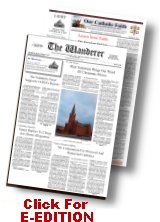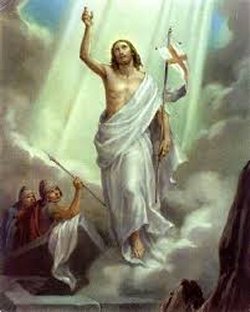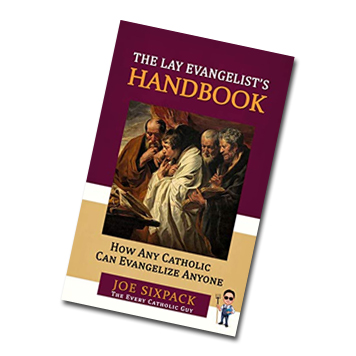Feast Of The Presentation Of The Lord (YR A)
By FR. ROBERT ALTIER
Readings: Mal. 3:1-4
Heb. 2:14-18
Luke 2:22-40
Inhabitants Of The New Jerusalem
Today’s Feast of the Presentation of the Lord is filled with mystery. A few weeks back we celebrated the Epiphany where we heard about the visit of the Magi. People sometimes wonder about the timing of their visit. It is quite evident that the Holy Family had not yet fled into Egypt for at least the forty days that followed our Lord’s birth; otherwise, they could not have been in Jerusalem for the feast we celebrate today.
So, while we do not know the time of the arrival of the Magi, we can assume that it was not within days of Christmas.
Today is the fortieth day since Christmas. According to the Jewish law, the mother would come to the Temple on the fortieth day after giving birth to be purified from the flow of blood that occurred in the birth. Such bleeding would cause the woman to become ritually impure, so there was a ceremony that took place on the fortieth day which brought her back into ritual unity.
St. Luke, however, does not refer to the purification of our Lady. Instead, he curiously says that “when the days were completed for their purification.” What is more interesting is that the Evangelist tells us that this is according to the Law of Moses. What is going on here?
First of all, we must recall that our Lady did not need to be purified because the birth of our Lord was miraculous. Every birth is a miracle, but in this case I am referring to the fact that the birth of Jesus was not “normal.” Just as He entered our Lady’s womb without the normal means being employed, so He came forth from her womb without the normal opening of the birth canal. There was no flow of blood and, therefore, no necessity for our Lady to be purified.
René Laurentin points out that in Greek there are two ways of spelling the word “Jerusalem,” one which refers to the secular city and one which makes reference to the holy city. Prior to the Presentation, the spelling for the secular (read: unclean) city is used. After the Presentation the spelling used for the holy city is employed. Therefore, Laurentin asserts, the word “their” is used to refer to Jerusalem and its inhabitants which are now purified by the presence of our Lord in the Temple.
This corresponds to what we hear from the Prophet Malachi in the first reading where the Lord suddenly appears in the Temple but is described as one who will purify the sons of Levi so that the sacrifice of Judah and Jerusalem will be pleasing to the Lord.
Another aspect of this feast is, as St. Luke points out, that the Law required that any male who opens the womb be consecrated to the Lord. Along with this is the redemption of the child as a reminder that the firstborn sons of the Israelites were spared in the final plague in Egypt. However, Jesus is the Lord and He is the Redeemer. So, once again, it makes little sense that He needed to be either presented or redeemed.
The clue to understanding this part of the mystery may be found near the end of the Gospel reading where we hear about Anna, the holy woman who recognized the Lord, and spoke of Him to “all who were awaiting the redemption of Jerusalem.” So, this purification of Jerusalem redeems the holy city and makes its sacrifices pleasing to the Lord.
Seeing things this way, we can apply the same concept our Lord addresses to St. John the Baptist when Jesus comes to be baptized. On that occasion He says it is to fulfill all righteousness. He did not need to be baptized any more than He needed to be presented or redeemed. But it was not for Him — rather, it was for them (by extension, for us) as St. Luke tells us so that all righteousness might be fulfilled.
This brings us to the reflect on the events that took place in Jerusalem thirty-three years after the Presentation. In the second reading St. Paul speaks of our Lord’s human nature and tells us that He took this nature so that He could be a merciful and faithful High Priest before God and to expiate the sins of the people. So, in the ancient sacrifices of the turtledoves to redeem the firstborn, we see the foreshadowing of the new sacrifice that would purify the New Jerusalem and redeem all of its inhabitants.
We are privileged to be members of the firstborn of all creation and members of the New Jerusalem. So, the mysterious events commemorated in this feast become more clear and practical when applied to the Church (the New Jerusalem) and to us as its inhabitants.










